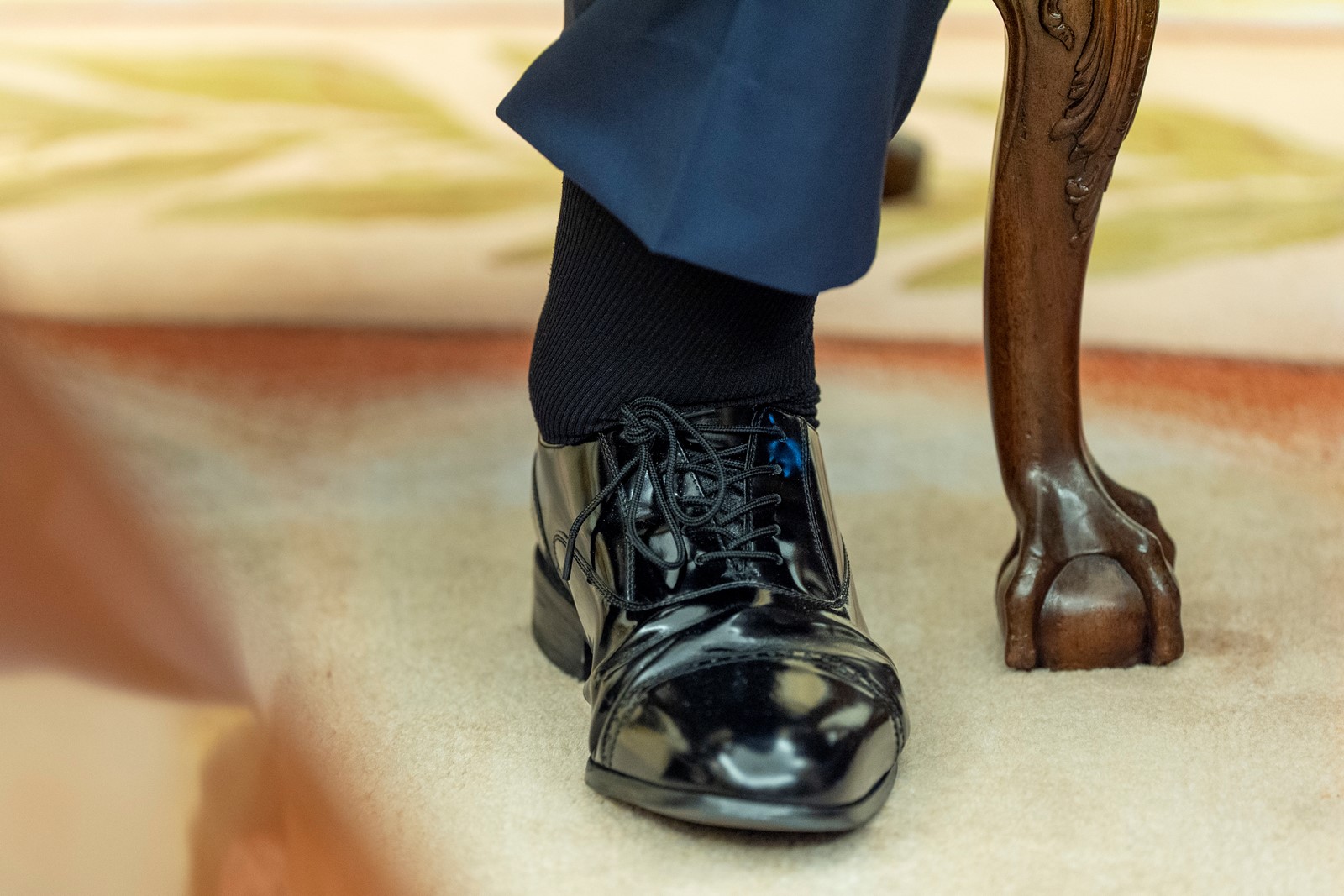
WASHINGTON — White House press secretary Karoline Leavitt on Thursday read a doctor’s letter about President Donald Trump that she said was intended to dispel health concerns about the swelling in his ankles and a makeup-covered hand.
Leavitt said Trump noticed “mild swelling” in his lower legs and was evaluated by the White House medical unit.
She said the tests showed “no evidence of deep vein thrombosis or arterial disease,” but that Trump has “chronic venous insufficiency,” a fairly common condition in older adults when little valves inside the veins that normally help move blood against gravity up the legs gradually lose the ability to work properly.
Leavitt said the issue is common in people older than age 70. Trump turned 79 last month.
People often are advised to lose weight, walk for exercise and elevate their legs periodically, and some may be advised to wear compression stockings. Severe cases over time can lead to complications including lower leg sores called ulcers. Blood clots are one cause, but Leavitt said that was tested for and ruled out.
She also said bruising on Trump’s hand that has been covered up by makeup is “consistent” with irritation from his “frequent handshaking and the use of aspirin.”
Leavitt said “the president remains in excellent health.”
She promised to make the doctor’s letter public.
Swollen legs led to President Donald Trump being diagnosed with what’s called chronic venous insufficiency. It’s a fairly common condition among older adults but requires a thorough checkup to rule out more serious causes of swelling in the legs. Here are some things to know.
What is chronic venous insufficiency?
Chronic venous insufficiency, or CVI, happens when veins in the legs can’t properly carry blood back to the heart. That can lead to blood pooling in the lower legs. In addition to swelling, usually around the feet and ankles, symptoms can include legs that are achy, heavy feeling or tingly, and varicose veins. Severe cases could trigger leg sores known as ulcers.
What causes chronic venous insufficiency?
Overcoming gravity to pump blood from the feet all the way up to the heart is a challenge, especially when someone is standing or sitting for long periods. So legs veins are lined with one-way valves that keep blood from sliding backward on that journey. Anything that damages those valves can lead to chronic venous insufficiency. Risk factors can include blood clots, vein inflammation known as phlebitis or being overweight.
How is chronic venous insufficiency diagnosed and treated?
Doctors must rule out serious causes of leg swelling, such as heart problems, kidney disease or blood clots. Ultrasound exams of the leg veins can help confirm chronic venous insufficiency. According to the Cleveland Clinic, treatment can include wearing compression stockings, elevating the legs and achieving a healthy weight. Also exercise, especially walking, is recommended — because strong leg muscles can squeeze veins in a way that helps them pump blood. Medications and medical procedures are available for more advanced cases.


 PREVIOUS ARTICLE
PREVIOUS ARTICLE
